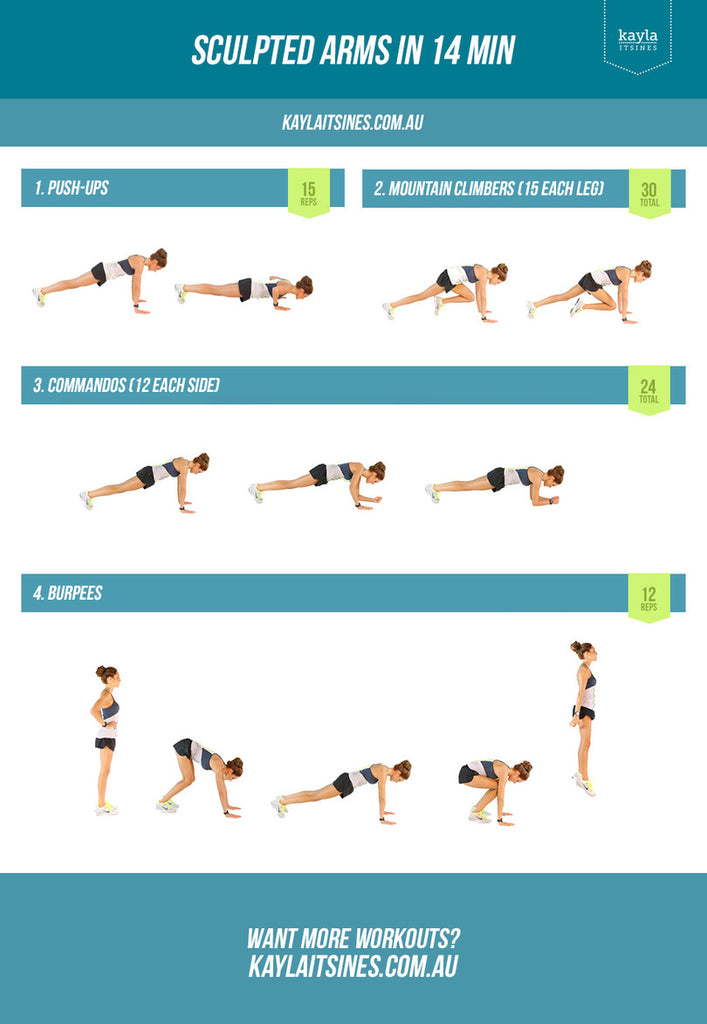How To Plank For Core Strength


The plank is a simple bodyweight exercise that can build your core strength while engaging your shoulders and glutes. It’s a super-effective exercise that I love to do, and for the ladies following my programs in the Sweat app, you would have already come across planks and plank variations!
Find out:
- How to do a plank with proper form
- Benefits of doing planks
- Plank variations to try
- How to make your planks harder
The plank is a key bodyweight exercise that forms the basis of other exercises used in high-intensity workouts, including mountain climbers, push-ups and burpees.
Getting your planks right sets you up for these more complex exercises, so I’ll explain how to do a plank with proper form, and share some plank variations you can use to build core strength.
How to do a plank with proper form
When you do a plank with correct form, it engages your whole body from head to toe!
Here’s how to do a standard plank:
1. Start by placing your forearms (wrist to elbow) firmly on the mat, ensuring that your elbows are directly below your shoulders.
2. Extend both legs behind you and elevate your hips off the mat, resting on the balls of your feet.
3. Brace your abdominals and ensure that your spine remains in a neutral position.
4. Hold this position for 20-30 seconds, breathing deeply throughout.
If you found that this position was too difficult, you can start by doing the plank with your knees on the ground, or with an incline plank that I will show you below.
For those ladies who found this really easy, try holding the plank for longer or increasing the difficulty with some of the plank variations I recommend below!
Benefits of doing planks
Doing planks strengthens your core muscles, including the transverse abdominis and obliques, as well as the rectus abdominis or ‘six-pack’.
These core muscles support your pelvis and spine, however doing planks also strengthens your upper back muscles and can improve overall muscular endurance.
Some of the advantages of having a strong core include:
- Can help to reduce any risk of lower back pain
- Improved posture
- Better balance
- Improved form in more complex exercises like burpees or push-ups
- Better stability during exercises like squats.
When you incorporate planks into your ab workout routine, you target the deep core muscles as well as the superficial core, hamstrings, glutes and quads.
This is important if your goal is to increase your full body strength and fitness, while reducing any risk of injury.
Plank variations to try
Doing planks might seem pretty boring when you are just holding a single position for as long as you can.
To keep your mind engaged as you build core strength, here are some plank variations you can incorporate into your ab workouts.
Some of these are easier and some are harder, so pick the options that are right for you as you build core strength!
Incline plank
If you are new to planking, this is an easier variation you can use to increase your core strength and build towards a full plank.
1. Begin by placing your forearms (wrist to elbow) firmly on a chair, ensuring that your elbows are directly below your shoulders.
2. Extend both legs behind you, resting on the balls of your feet, this is your starting position.
3. Gently draw your ribs to your hips to engage your core and ensure that your spine remains in a neutral position.
4. Hold this position for 20-30 seconds, ensuring that you continue to breathe throughout.
High plank
These are done with your arms straight, and strengthen your core in preparation for the more intense standard plank.
1. Begin on all fours on a yoga mat, resting on your knees and placing your hands slightly wider than your shoulders.
2. Step your feet towards the back of the mat, one at a time, and lift your hips so that your body forms a straight line from your head down to your heels.
3. As you hold this position, focus on drawing up through your pelvic floor and ensure that your shoulders remain in line with your wrists.
4. Try to press your shoulders away from the mat to help stabilise through the upper body.
5. Hold this position for 20-30 seconds, controlling your breathing throughout.
In & out plank
This plank variation will challenge your balance! It’s a great way to build dynamic core strength and add an extra element of difficulty to a standard plank.
1. Start by placing your forearms (wrist to elbow) firmly on the mat, ensuring that your elbows are directly below your shoulders.
2. Extend both legs behind you and elevate your hips off the mat, resting on the balls of your feet, with your feet together. Brace your abdominals and ensure that your spine remains in a neutral position. This is your starting position.
3. While keeping your hips as still as possible, step your left foot outwards slightly, followed by your right foot, so that your feet are hip-width apart.
4. While keeping your hips as still possible, step your left foot inwards, followed by your right foot, to return to the starting position.
5. Repeat for 20-30 seconds, controlling your breathing throughout.
Plank & drag
This exercise trains you to engage your abs through movement. It tests your upper body and core strength, balance and endurance.
1. With a dumbbell behind your left hand, place both hands on the floor shoulder-width apart and both feet together behind you, resting on the balls of your feet. This is your starting position.
2. Release your right hand and place your hand on the dumbbell. Drag the dumbbell across the mat, release your hand and place it in front.
3. Release your left hand and place your hand on the dumbbell. Drag the dumbbell across the mat, release your hand and place it in front.
4. Continue alternating between right and left for 20-30 seconds.
X plank
This dynamic exercise engages your obliques and keeps you moving throughout the exercise.
It’s not about how fast you go — keep your movements slow and controlled to build your core strength!
1. Place both hands on the floor shoulder-width apart and both feet apart behind you, resting on the balls of your feet. Brace your abdominals and maintain a neutral spine, ensuring that your hands are directly below your shoulders. This is your starting position.
2. While stabilising through your abdominals, elevate your hips and release your left hand to reach towards your right foot (or as far as you can).
3. Lower your hips and place your left hand on the mat to return to the starting position.
4. While stabilising through your abdominals, elevate your hips and release your right hand to reach towards your left foot (or as far as you can).
5. Lower your hips and place your right hand on the mat to return to the starting position.
Continue alternating between left and right for 20-30 seconds.
Side plank
When you first start out with the side plank, you can begin by stacking your knees, one on top of the other, on the mat and building strength through your side body.
Once you feel comfortable and can hold this position for 30 seconds, increase the intensity by lifting your knees and stacking your feet in a full side plank.
1. Start by lying lengthways along a yoga mat. Place your left forearm firmly on the floor, ensuring that your elbow is directly below your shoulder and that your forearm is parallel to (in line with) the short edge of your mat.
2. Extend both legs and, using your obliques, gently raise your hips off the mat.
3. Position your feet one on top of each other or place your left foot on the mat in front of your right — whichever is most comfortable.
4. Hold this position for 20 seconds, then repeat on the other side.
Side plank and oblique crunch
This advanced move will challenge you as you build side body and core strength!
1. Begin by lying lengthways on your left side along a yoga mat. Place your left forearm firmly on the floor, ensuring that your elbow is directly below your shoulder and that your forearm is parallel to (in line with) the short edge of your mat.
2. Extend both legs and, using your obliques, gently raise your hips off the mat. Position your feet one on top of each other with your right arm extended above your head. This is your starting position.
3. Inhale to prepare. Exhale and, while maintaining a neutral spine, simultaneously bend your right knee, hip and elbow to draw your elbow and knee together.
4. Inhale and extend your right arm and leg to return to the starting position.
5. Repeat for 5 repetitions on each side.
Reverse plank
This plank variation targets the glutes, hamstrings, obliques, triceps and shoulders.
1. Begin seated on a yoga mat, legs straight and resting your hands slightly wider than your shoulders. Using your glutes, press your heels into the floor to lift your hips so that your body forms a straight line from your chest down to your heels.
2. Brace your core and glutes as you hold this position. Ensure that your shoulders remain in line with your wrists and press your palms into the mat to help stabilise through the upper body.
3. Hold this position for 20-30 seconds, controlling your breathing throughout.
Decline plank
A decline plank is another advanced plank that focuses on your transverse abdominis and other core muscles. You can use a bench or chair, or test your stability and balance by using a fitball to elevate your feet.
1. Place both hands on the floor shoulder-width apart with both feet together behind you, resting your shins on a fitball.
2. Brace your abdominals and ensure that your spine remains in a neutral position, ensuring that your shoulders are stacked over your wrists.
3. Hold this position for 20-30 seconds.

How to make your planks harder
If you've been doing planks for a while you might notice you aren’t really feeling the same burn that you used to. That can be a good thing! Maybe you just need to make your planks a bit harder! Here are a few other ways you can step up the intensity and make your planks a bit harder.
Unclasp your hands
When you get into plank position, do you normally clasp your hands together (kind of like you are about to say a prayer)? Try switching it up. Unclasp your hands and lay your forearms and hands flat on the ground. Doing this reduces the chance of rounding your shoulders, as well as making your core work harder.
Add an incline
Make your plank even harder by adding a footstool or a step. This raises your feet slightly higher than your shoulders and makes your body work harder to maintain stability. You want to work as many muscles in your core as you can, and this move can definitely help with that!
Challenge your stability
Ready for a bigger dose of plank progression? Then you might want to challenge your stability. Grab a BOSU ball and place the flat side on the ground. Rest your forearms on the bubble and lift your knees to come into a full plank. Your body will work harder to help you maintain balance.
If you are feeling game, try flipping the BOSU over and gripping onto the sides for balance. It’s way harder than you might think!
Add some resistance
Another way to make your planks harder? Add some more weight! Try wrapping a resistance band around your shoulders and holding the ends of the band under your hands. You can also put on a backpack with a few light items in it to add a little extra weight next time you are doing a plank. It may feel a little strange at first, but it can make a difference!
Increase your core strength using plank exercises
Whether you are a fitness beginner or you’ve been training for some time, planks are a great addition to your workout routine to increase your core strength and overall fitness.
There are so many core-focused exercises that aren’t crunches that you can use to build your core strength. I like planks because they really do work your whole body!
Which plank variation do you prefer? Let me know in the comments!
* Disclaimer: This blog post is not intended to replace the advice of a medical professional. The above information should not be used to diagnose, treat, or prevent any disease or medical condition. Please consult your doctor before making any changes to your diet, sleep methods, daily activity, or fitness routine. Sweat assumes no responsibility for any personal injury or damage sustained by any recommendations, opinions, or advice given in this article.




<#= c.user.username #><#= moment(c.created_at * 1000).fromNow() #>
<#= c.html_body #> <# if (c.images) { #>
<# } #>